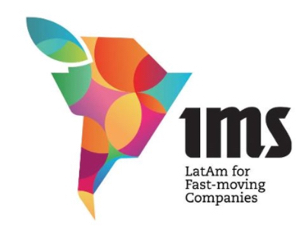March 24, 2000
For Immediate Release:
Proteron unleashes EasyMP3, next generation MP3 software
Omaha, Nebraska USA – Proteron, LLC today releases EasyMP3, the first in
the second generation of MP3 encoders. Sporting the industry’s best MP3
codec, EasyMP3 packs all the most-advanced features, include ID3 tagging
and CDDB2 access, into a revolutionary, unobtrusive, easy-to-use interface.
A small footprint and ultra-sleek design make EasyMP3 the perfect MP3
encoder for UltraPlayer, WinAmp and Sonique users.
The software ranks among the fastest and highest quality MP3 products
currently available and effectively builds MP3 encoding functionality
directly into the operating system, making conversion of digital audio
seamlessly integrated with Windows functionality. EasyMP3 is the successor
to Proteron’s encoder N2MP3 encoder for the Macintosh. N2MP3 was released
in August of 1999 and quickly became the encoder of choice for Macintosh
users, winning several top awards, including a five star review from
MP3.com.
EasyMP3 contains not only a very high-end algorithm, but it also has the
simplest, cleanest interface imaginable. “If you have never encoded an MP3
file before, EasyMP3 is for you. On the other hand, if you are an MP3
veteran and you’ve been looking for a very clean sounding encoder, you can
sit back and relax: EasyMP3 is as high-end as MP3 gets.” said company
spokesman Neill Mollard at the product’s rollout party.
EasyMP3, now available for download, includes:
Industry’s highest quality encoder (Fraunhofer, gold standard)
Easiest, most intuitive interface imaginable
Fast Variable Bitrate (VBR) encoding
Complete support for CDDB2
ID3 tag creation and editing
Perfect for UltraPlayer, WinAmp & Sonique
EasyMP3 is immediately available for free download as a demonstration
version which limits encoding to twenty tracks and thereafter will only
encode the first minute of each additional track.
“EasyMP3 is the first step in bringing MP3 encoding onto your personal
computer. Now Windows users can have the same easy-to-use encoding that Mac
users have enjoyed, with N2MP3. Both have the same drag-and-drop
simplicity.” says Sam Caughron, CEO of Proteron LLC.
Proteron began as a Macintosh software development company and is currently
expanding its product line for the Microsoft Windows operating system
family. The company is actively leveraging online distribution methods to
provide higher quality software at a lower cost to users who want to put
their music collections online or into portable MP3 music players. A major
upgrade to N2MP3 is currently a work in progress.
EasyMP3 Fact sheet
Product Name: EasyMP3
Version: 1.0 (inital release)
Platform: Windows 95, 98, NT and 2000
Web page: www.easymp3.net or www.proteron.com/easymp3
Company: Proteron, LLC (www.proteron.com)
Online Price: $19.95
Here’s how EasyMP3 works: You put an audio CD into your computer’s CD-ROM
drive. As it mounts, the name of the desktop CD icon changes to the title
of the CD you just put in, thanks to a quick CDDB2 look-up. You open the CD
icon, and inside you find icons for the individual songs. To convert a song
to MP3, simply right-click on it or drag it to your desktop (or another
previously designated folder). The EasyMP3 progress window pops up and a
few minutes later, your fresh MP3 file is out of the oven. When combined
with the UltraPlayer (www.ultraplayer.com) EasyMP3 also provides a
convenient way to encode audio tracks on Enhanced CDs (which don’t show up
on the Finder desktop as audio CDs) and uncompressed AIFF audio files.
The MPEG1 layer III codec in EasyMP3 is being licensed directly from patent
holders Fraunhofer-Thomson. Statements in this press release that are not
strictly historical are “forward-looking” statements within the meaning of
Section 27A of the Securities Act of 1933 and Section 21E of the Securities
Exchange Act of 1934. These statements involve a high degree of risk and
uncertainty, are predictions only and actual events or results may differ
materially from those projected in such forward-looking statements. Factors
that could cause or contribute to differences include the Company’s new and
uncertain business model, uncertainty regarding acceptance of the Company’s
products and services, the Company’s limited operating history and risks
associated with the Company’s rapid growth.


